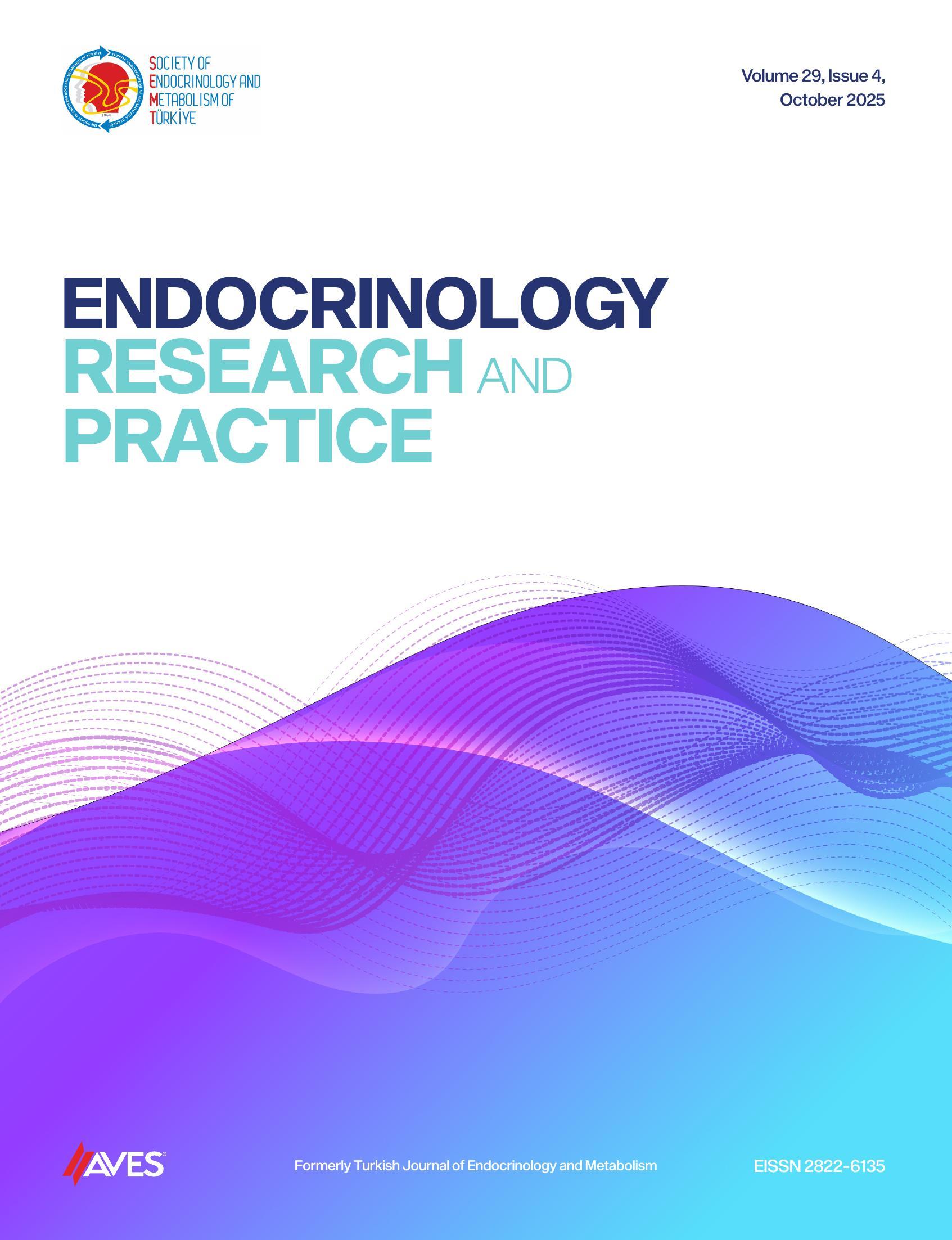Objective: This study aimed to describe distinct anti-thyroglobulin antibody (TgAb) trend trends and assess their association with clinical outcomes in papillary thyroid carcinoma (PTC).
Methods: Twenty-two PTC patients with TgAb positivity (at diagnosis, postoperative follow-up, or post-Radioidoine (RAI) were retrospectively analyzed, classified into classical (declining/stable/ increasing) and nonclassical trend groups, and their clinical and outcome data was reviewed.
Results: Classical TgAb patterns were observed in 14 patients (63.6%), including 12 with a declining pattern (median time to seronegativity: 20 months, range: 12-48) and 2 with persistently stable positivity. Among those with decreasing TgAb, 2 patients had previously experienced structural recurrence, both accompanied by transient TgAb rises. In the stable subgroup, 1 patient had persistent but subcentimetric nodal disease without progression. Nonclassical patterns were identified in 8 patients (36.4%), distributed across 4 distinct scenarios: (1) Persistently very high TgAb remaining undetectable without structural disease (n=2), lasting ≥3 years, (2) transient de novo TgAb positivity following radioiodine treatment (RAIT) (n=2), with spontaneous decline to negativity within 12-18 months, (3) late-onset de novo TgAb after RAIT, remaining stable without structural disease (n=2), remaining stable (up to 5 years) without evidence of disease, (4) de novo TgAb rising with recurrence (n=2), 1 presenting with nodal relapse and the other with pulmonary metastases, both showing TgAb decline after treatment.
Conclusion: In PTC follow-up, TgAb trends were more informative than absolute levels: transient elevations and de novo stable or persistently stable TgAb were less likely to indicate structural disease, whereas de novo rising TgAb strongly suggested recurrence. However, given the small, single-center cohort and retrospective design, these findings require confirmation in larger prospective studies.
Cite this article as: Bahçecioğlu AB, Erdem M. A new perspective on antithyroglobulin antibody patterns in the follow-up of papillary thyroid carcinoma. Endocrinol Res Pract. 2025;29(4):320-326.

-1(1).png)

.png)